Category: life extension – Page 421
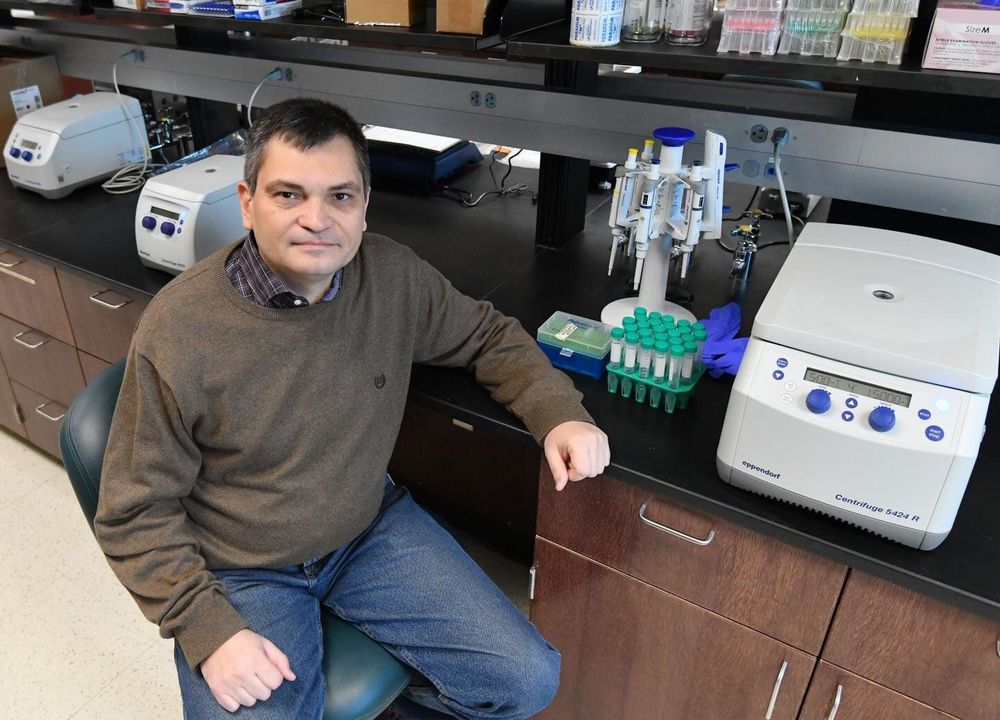
The connection between ribosomes and telomeres in plants
Findings from a recent research project, conducted by a Marshall University scientist and assistant professor in the Marshall University College of Science, with researchers in Texas, was recently published in the December issue of the prestigious online journal, Nature Communications.
Dr. Eugene Shakirov is studying the connection between ribosomes and telomeres in plants. Telomeres are the physical ends of chromosomes and they shorten with age in most cells. Accelerated shortening of telomeres is linked to age-related diseases and overly long telomeres are often linked to cancer.
Telomere length varies between individuals at birth and is known to predetermine cellular lifespan, but the genes establishing telomere length variations are largely unknown. The research being done by Shakirov, along with collaborators at the University of Texas at Austin, Texas A&M University, HudsonAlpha Institute for Biology and the Kazan Federal University in Russia focused on the study of the genetic and epigenetic causes of natural telomere length variation in Arabidopsis thaliana, a small flowering plant.
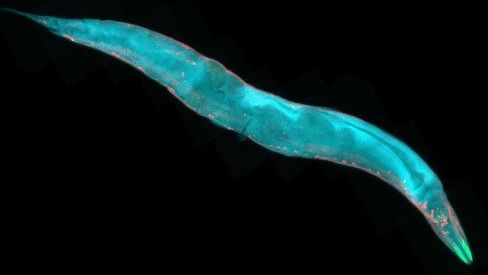
Pathways that extend lifespan by 500 percent identified
Scientists at the MDI Biological Laboratory, in collaboration with scientists from the Buck Institute for Research on Aging in Novato, Calif., and Nanjing University in China, have identified synergistic cellular pathways for longevity that amplify lifespan fivefold in C. elegans, a nematode worm used as a model in aging research.
The increase in lifespan would be the equivalent of a human living for 400 or 500 years, according to one of the scientists.
The research draws on the discovery of two major pathways governing aging in C. elegans, which is a popular model in aging research because it shares many of its genes with humans and because its short lifespan of only three to four weeks allows scientists to quickly assess the effects of genetic and environmental interventions to extend healthy lifespan.
Special Edition the Dawn of Super Longevity: Scenarios for a Post-Aging Future
Seeking Delphi podcast host Mark Sackler is joined by panelists Liz Parrish, Aubrey de Grey, David Wood and co-moderator Keith Comito to discuss scenarios for getting to—and dealing with—a post aging future.
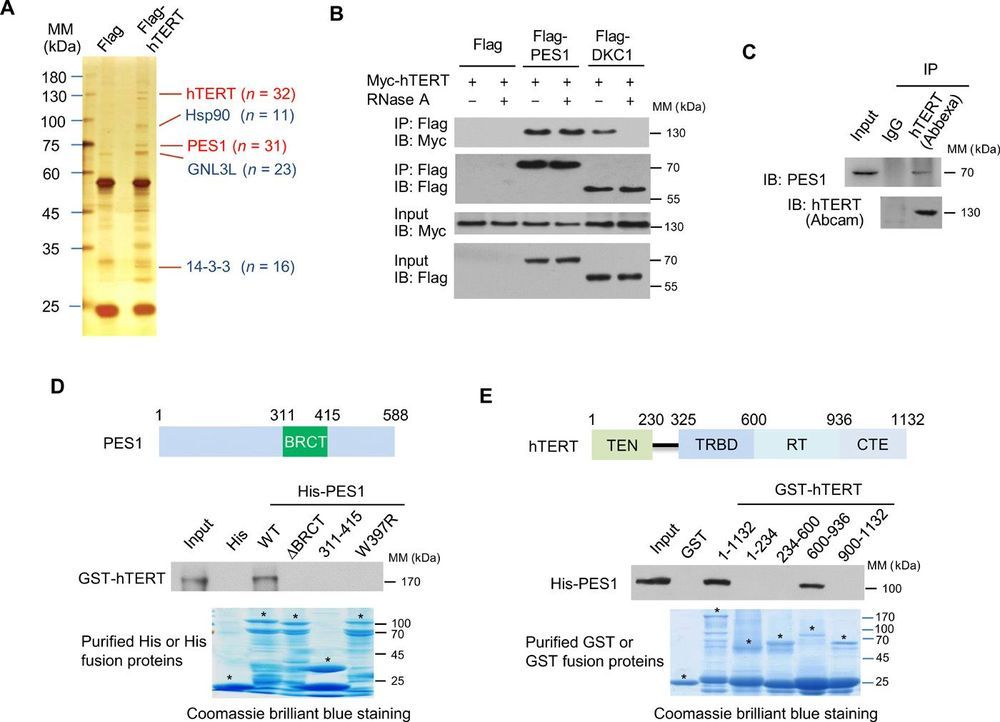
PES1 is a critical component of telomerase assembly and regulates cellular senescence
Telomerase defers the onset of telomere shortening and cellular senescence by adding telomeric repeat DNA to chromosome ends, and its activation contributes to carcinogenesis. Telomerase minimally consists of the telomerase reverse transcriptase (TERT) and the telomerase RNA (TR). However, how telomerase assembles is largely unknown. Here, we demonstrate that PES1 (Pescadillo), a protein overexpressed in many cancers, forms a complex with TERT and TR through direct interaction with TERT, regulating telomerase activity, telomere length maintenance, and senescence. PES1 does not interact with the previously reported telomerase components Reptin, Pontin, p23, and Hsp90. PES1 facilitates telomerase assembly by promoting direct interaction between TERT and TR without affecting TERT and TR levels. PES1 expression correlates positively with telomerase activity and negatively with senescence in patients with breast cancer. Thus, we identify a previously unknown telomerase complex, and targeting PES1 may open a new avenue for cancer therapy.
Telomerase is a ribonucleoprotein (RNP) enzyme that adds telomeric repeat DNA to chromosome ends (1–3). This prevents progressive shortening of telomeres caused by the failure of the DNA replication machinery to duplicate the very end of each chromosome. Once telomeres are shortened to a certain length, cells enter replicative senescence or, alternatively, undergo apoptosis, a major tumor-suppressive mechanism. Telomerase, which is required for de novo telomeric repeat DNA synthesis and telomere maintenance, is expressed in approximately 90% of cancer cells but undetectable in the majority of normal somatic cells (4–6). Thus, telomerase is thought to be a relevant factor in distinguishing cancer cells from normal cells and has become a target for cancer therapy.
Telomerase is minimally composed of the telomerase reverse transcriptase (TERT) and the telomerase RNA (TR). Studies have shown in vitro assembly of active telomerase by combining the purified RNA component with the TERT synthesized in rabbit reticulocyte extract (7–9). A few accessory proteins have been identified to associate with the active telomerase RNP complex. The molecular chaperones p23 and Hsp90 bind to human TERT (hTERT), and chemical inhibition of Hsp90 decreases telomerase activity (10, 11). However, determining whether Hsp90 is required for active telomerase assembly is difficult because chemical inhibition of a key chaperone in human cells potentially has pleiotropic and indirect effects. Assembly of human TR (hTR) and hTERT into catalytically active telomerase is facilitated by the adenosine triphosphatases Reptin and Pontin (12). Pontin knockdown (KD) reduces telomerase activity and hTR levels.
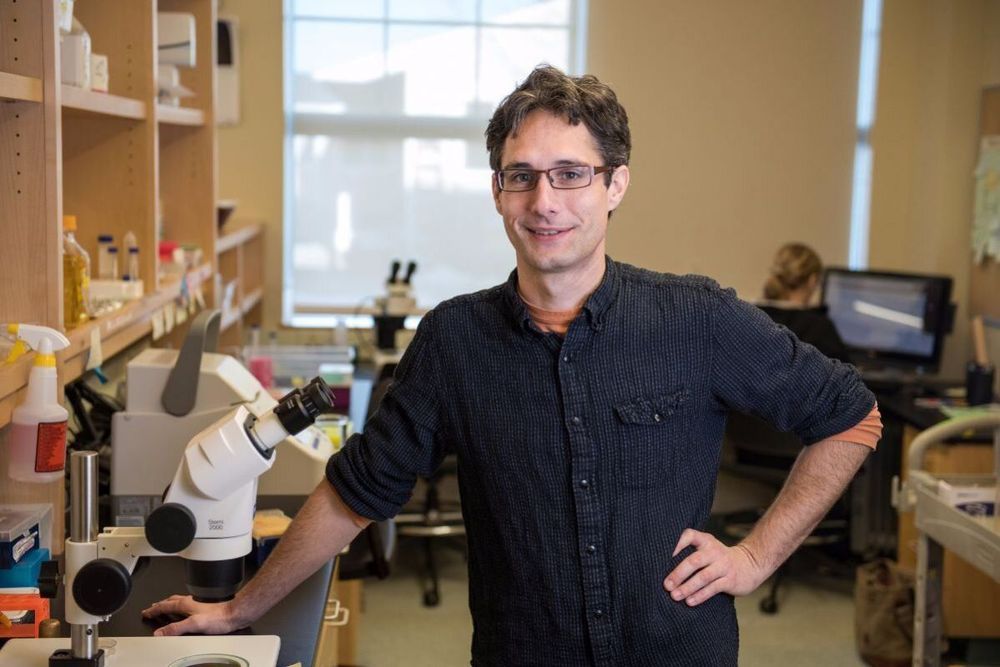
Biological scientists identify pathways that extend lifespan
Scientists at the MDI Biological Laboratory, in collaboration with scientists from the Buck Institute for Research on Aging in Novato, Calif., and Nanjing University in China, have identified synergistic cellular pathways for longevity that amplify lifespan fivefold in C. elegans, a nematode worm used as a model in aging research.
The increase in lifespan would be the equivalent of a human living for 400 or 500 years, according to one of the scientists.
The research draws on the discovery of two major pathways governing aging in C. elegans, which is a popular model in aging research because it shares many of its genes with humans and because its short lifespan of only three to four weeks allows scientists to quickly assess the effects of genetic and environmental interventions to extend healthy lifespan.
A US $30 million fund to promote bold ideas for aging populations: Dr Victor Dzau
US$30 Million to Seed Hundreds of Bold, Innovative Ideas for Human Longevity! — On this ideaXme (https://radioideaxme.com/) episode, I am joined by Dr. Victor Dzau, President of the U.S. National Academy of Medicine (https://nam.edu/initiatives/grand-challenge-healthy-longevity/) to talk about the potential of their Healthy Longevity Global Grand Challenge — eNag #ideaXme #VictorDzau #Wellness #Health #NationalAcademyOfMedicine #NAM #NAS #NIH #FDA #Duke #Cardiology #Longevity #Biotechnology #Regeneration #LifeExtension #Aging #Challenges #Prizes #Competitions #IraPastor #Bioquark #Regenerage
Ira Pastor, ideaXme exponential health ambassador and founder of Bioquark, interviews Dr. Victor Dzau, President of the United States National Academy of Medicine (NAM)and of the United States National Academy of Sciences (NAS).
Ira Pastor Comments:
On today’s show we are going to continue upon a theme that we started a few weeks ago, and that is in today’s (and the near future’s) world, we are facing this major demographic shift: by 2050, the estimated population of those 65+ will represent 18% of the global population, with an estimated group of 500 million octogenarians and above.
How do we continue to foster innovations to deal with this population aging that is, needless to say, poised to impose a significant strain on economies, health systems, and social structures worldwide?
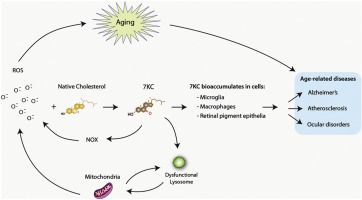
7-Ketocholesterol in disease and aging
7-Ketocholesterol is a harmful oxidized byproduct of cholesterol, it is highly toxic with no redeeming qualities and serves no purpose in our bodies aside from allowing heart disease to develop. Check out Underdog Pharma’s recent review at Science Direct to learn more!
Oxidative stress has long been causatively implicated in the aging process [219,220]. As described in section 2, 7KC is the most common stable product of a reaction between cholesterol and a free radical. This is a vicious cycle as 7KC also leads to increased free radical production and release, seemingly by plasma membrane permeabilization. As discussed above, mitochondrial dysfunction and free-radical formation are also strongly implicated in the aging process and so while the precise mechanistic links between mitochondria, 7KC, and aging are still being elucidated they seem likely to be intertwined.
Is 7KC a biomarker of aging? As discussed in section 4, 7KC accumulation is directly implicated in many diseases of aging, including atherosclerosis, heart failure, AMD, NAFLD, and AD. It is thus reasonable to hypothesize that when otherwise unrelated diseases of aging share a common cause, that this cause is likely to be a part of the biological aging process. 7KC is known to accumulate in phagocytic cells such as macrophages (promoting the formation of foam cells), RPE cells, and microglia. It has also been suggested that c. elegans subjected to 7KC could be a good model of 7KC-dependent aging [221]. As 7KC is broadly toxic, and most cells seem to have difficulty metabolizing it, it may be that, with age, 7KC is bioaccumulating and impairing functional activity of the cells and tissue.
As described in Section 3, 7KC is a potent inhibitor of lysosomal function. Lysosomal dysfunction is part of the degenerative aging process and is implicated in the cause of diseases such as AMD, atherosclerosis, and AD in which accumulation of non-degradable biomolecules in the lysosome prevent phagocytic cells from efficiently metabolizing phagocytized biological material [91]. We therefore propose that 7KC plays an important role in the loss of function associated with aging and the lysosomal dysfunction produced by 7KC is a key mediator of this role. Thus, as argued in the previous sections, although diseases of aging present with disparate symptoms, a central element to many of the symptoms could be production and accumulation of 7KC. Despite the fact that the biological effects of 7KC have been studied since at least the 1940s, relatively little has been published quantifying intracellular 7KC levels in vivo with age.

Treating Glaucoma with Senolytics
New research suggests that senolytic drugs, which remove harmful senescent cells that accumulate during aging, may be an effective therapy for glaucoma, a common age-related condition that leads to loss of vision.
In the short term, inflammation serves a useful purpose, as it helps to spur the repair and regeneration of tissue and rallies the immune system to defend against marauding invaders.
However, the chronic, smoldering, low-grade inflammation that occurs during aging can be incredibly harmful. The sources of this “inflammaging,” as some researchers describe it, include (but are not limited to) dysfunctional immune cells, cell debris, disruption to the gut microbiome, and senescent cells. Today, we are concerned about the latter after the release of a new study focusing on senescent cells and glaucoma [1].